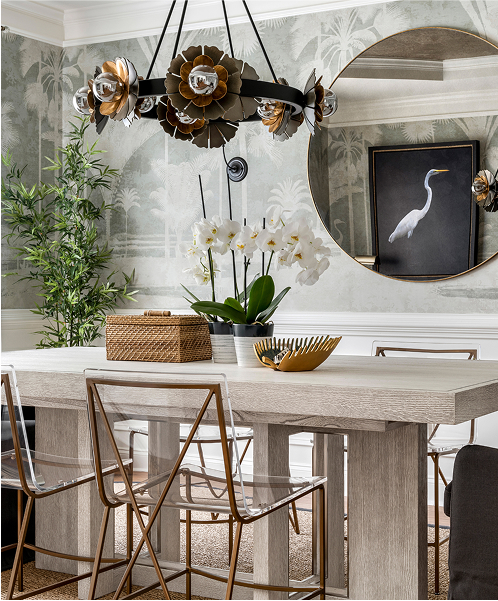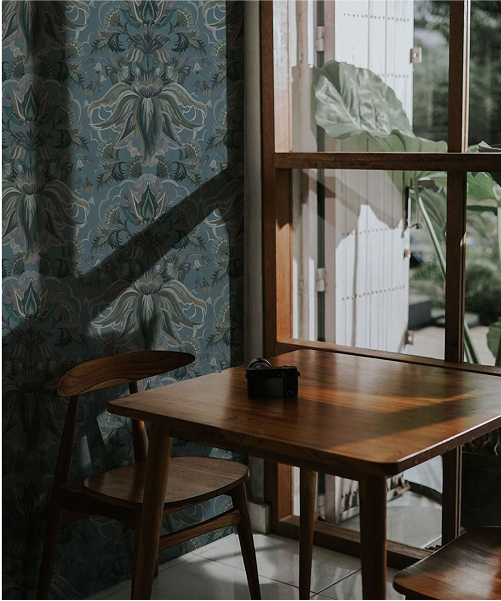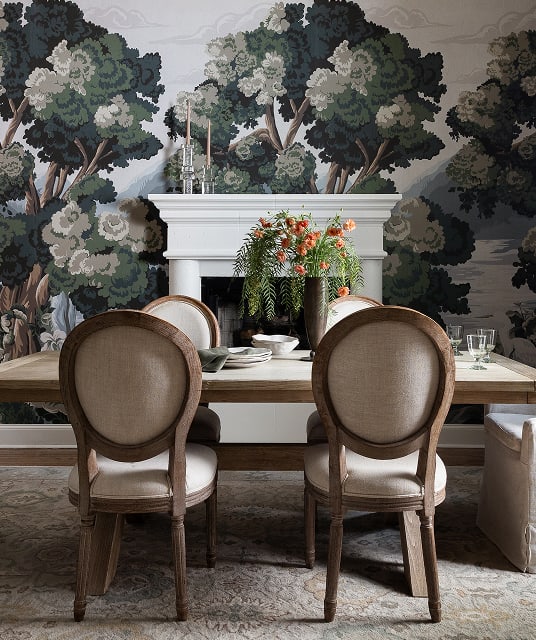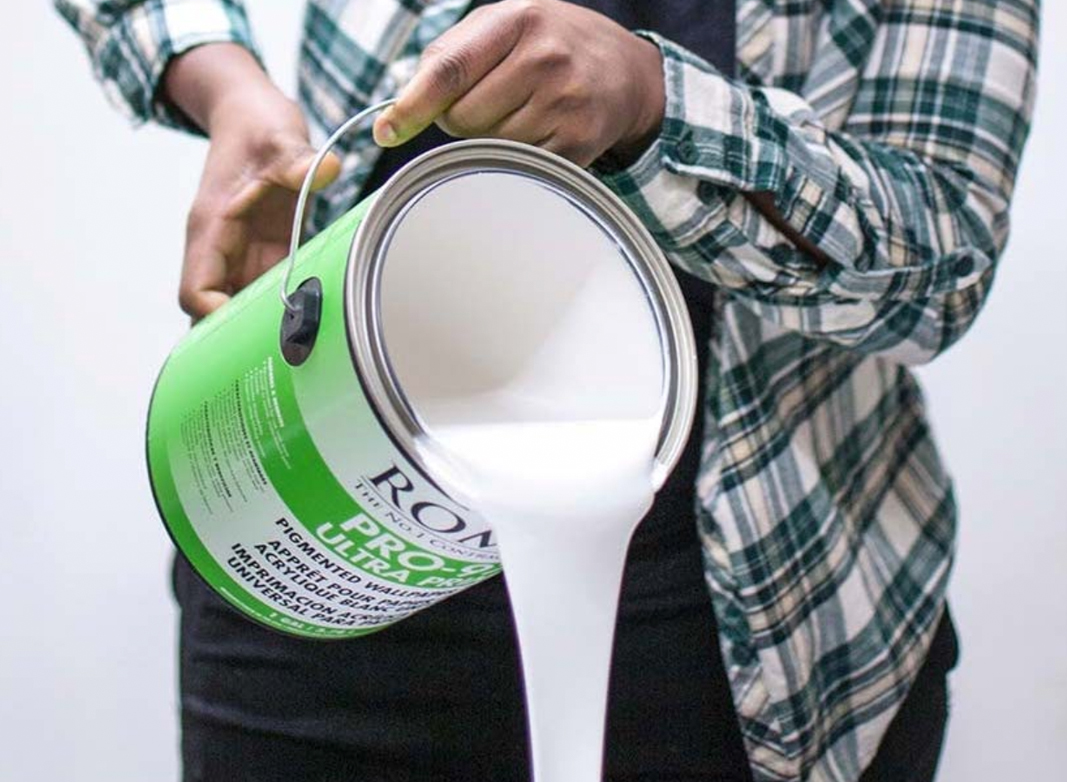What Is The Purpose of A Wallpaper Primer?
The last thing you want to have to happen is for your wallpaper to start peeling from the wall before its useful life is through. If you know the usual culprits that can cause your installation to fail, you can address them from the start. Lack of adhesive and improper installation are the two main reasons a wallpaper installation fails.
Installation techniques are the focus of another article so let’s talk about adhesive issues. Wallpaper adhesives are water-based products. Unprimed walls will absorb the water from the adhesive before it has a chance to fully adhere to the wallpaper and cause your installation to fail.
To help make this clear, think of painting an unprimed wall for the first time. The first coat barely covers the surface. This is because the wall soaked up the bulk of the paint leaving only a minimal coating. Applying the second coat gives you the coverage you want and hides the underlying drywall. This is because the surface is no longer absorbing moisture. It allows the paint to stick to the first coat instead of the wall.
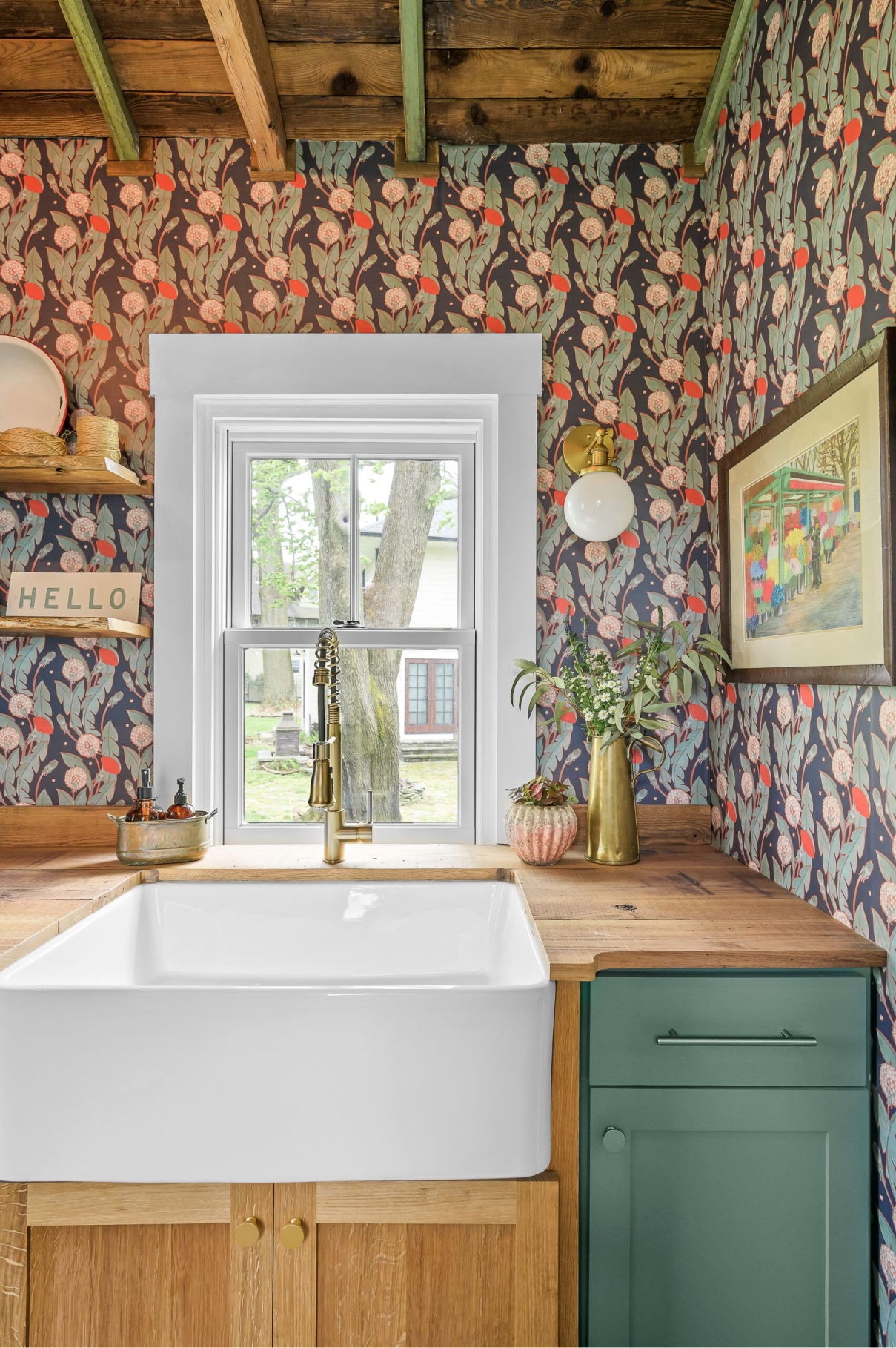
Photo above comes courtesy of Heather Wicks from Yorklyn Home featuring the Dandelions Wallpaper
The same process happens when applying wallpaper adhesive. If the raw wall is not properly prepared, it will absorb too much water from the adhesive and the wallpaper will not adhere. Eventually, it will start coming off the wall.
There are three primary purposes for priming a wall before hanging wallpaper:
- Sealing the wall.
- Presenting a proper surface for the wallpaper adhesive to attach to.
- Making the removal of the wallpaper easier when the time comes.
Sealing or priming the wall ensures that the adhesive will stick to the wallpaper and the primer rather than the surface beneath. But another benefit of using a primer is that the wallpaper will come off much easier when it is time. This is because the wallpaper has adhered to the primer and not the wall. For example, have you ever tried to remove old wallpaper and discovered that it was sticking to the wall instead of coming off? The reason was the wall was not properly primed to begin with.

What Type Of Wall Surface Are You Covering?
You can install wallpaper on almost any surface, but how the surface is prepared will vary.
- Is the installation over old walls that have been repaired with joint compound?
- Is this a new construction project with unpainted or recently painted drywall with a contractor grade paint?
- Are the walls just a few years old but have sound paint on them?
- Are you covering a non-porous surface such as glass or tile?
For each of these conditions, there is a “best” wallpaper primer to use. Some companies may recommend an all-purpose product for every surface. But primers, like anything else, are manufactured to handle specific situations.
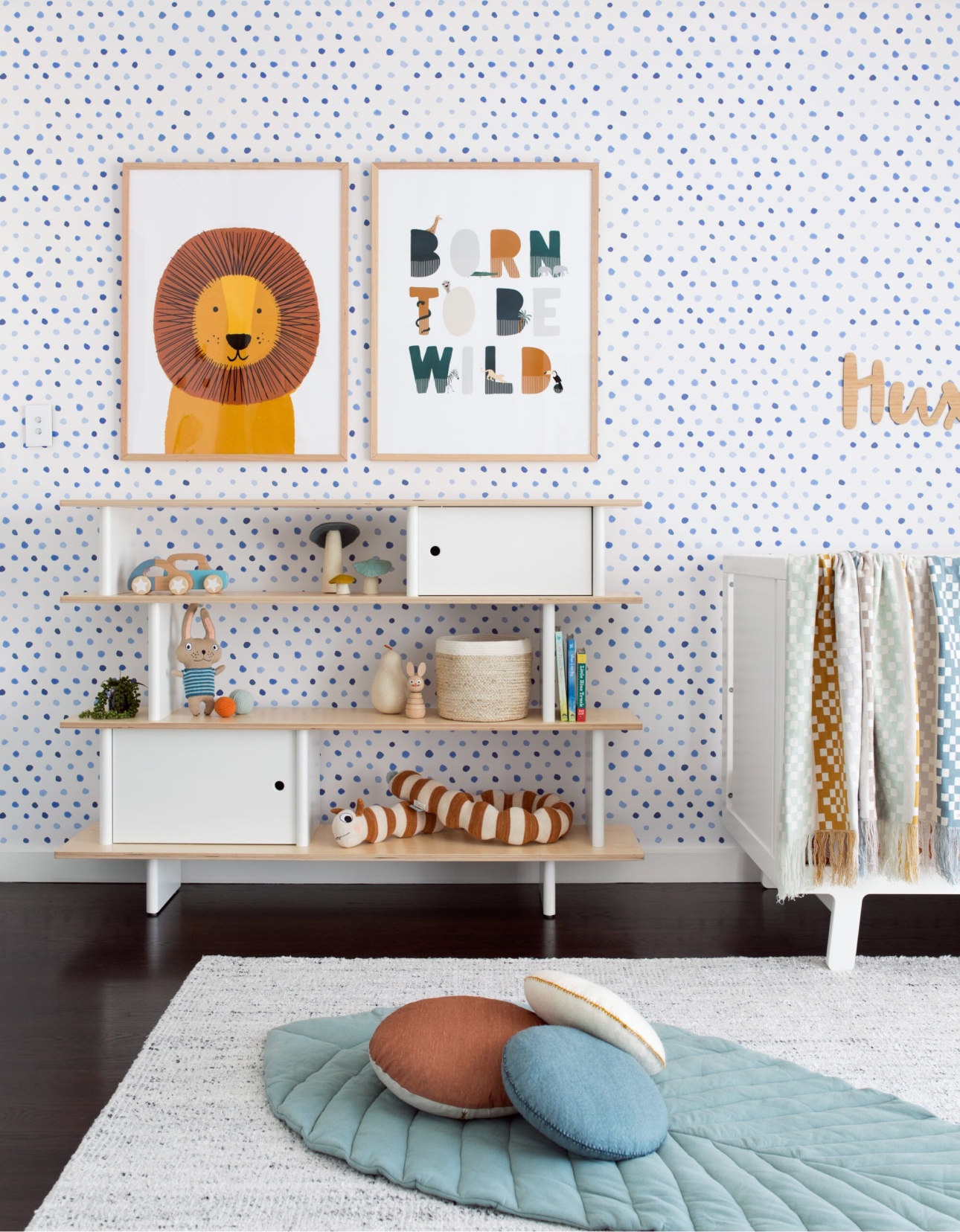
Photo above comes courtesy of Oh Eight Oh Nine of the Dibba Dots Wallpaper.
Different Types Of Wallpaper Primers
Adhesives will vary based on the type of wallpaper you are hanging, but primers are manufactured to achieve best results based on the wall surface they are being applied to. Milton & King’s fine selection of non-woven wallcoverings are installed primarily by the paste-the-wall technique so the primer needs to address the underlying wall surface issues in order to be compatible with the adhesive that will complete the installation.
For the conditions above, here are some recommendations. All of these products will work perfectly with Milton & King’s non-woven paste-the-wall type of wallpaper.
- Older walls with numerous repairs should use a primer that will seal and lock down porous surfaces like skim coats (over textured finishes), and mud joints. An excellent primer for this application would be Roman Products PRO-999 Rx-35. It is also a great choice for covering contractor-grade flat paint and popcorn ceilings.
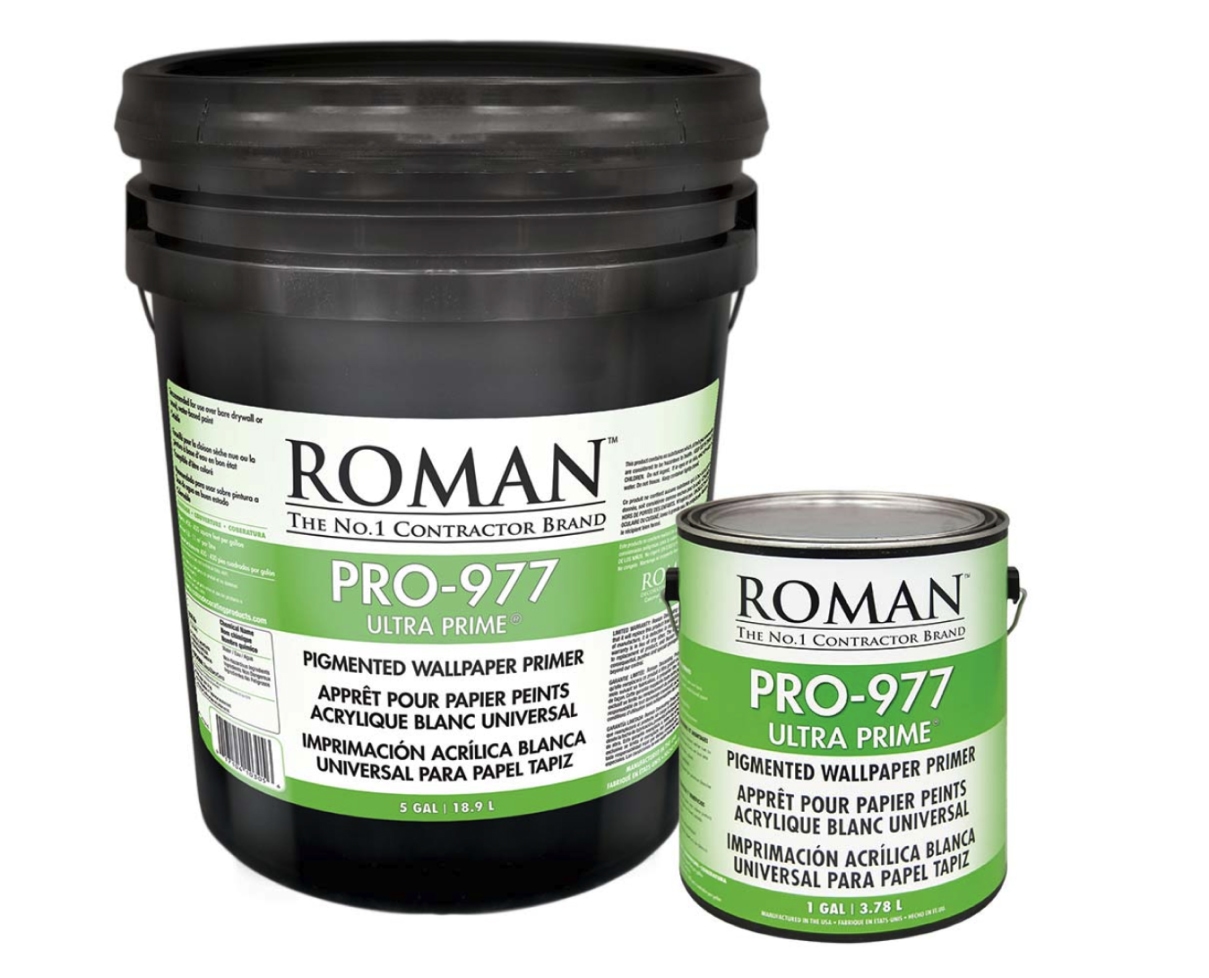
- New construction drywall and sound painted surfaces are an ideal candidate for a pigment-based primer like Roman’s PRO-977 Ultra Prime that will seal the drywall and prepare the surface for an adhesive. Bare drywall will absorb too much moisture from the primer and the adhesive will not provide optimum results. This type of primer works well with the permeable, non-woven wallcoverings that Milton & King carries.
Additionally, PRO-977 can be tinted with up to 4 ounces of universal colorant to closely match the color of the wallpaper. Tinting the primer helps hide the color of the wall and keeps it from bleeding through the wallpaper.
- Newer walls with sound paint will perform well with a clear acrylic general purpose primer like Roman PRO-909 to prep for vinyl wallpaper primer. If the wallpaper is going over a painted wall that is already color matched, you do not need the tintable product.
- When wallpapering over glass, tile or other non-porous surfaces, you want to use an adhesion-promoting primer such as Roman PRO-935 R-35. Glass and tile have a very smooth exterior and this type of primer will grasp the surface and allow the wallpaper paste to adhere to the primer instead of the glass or tile.
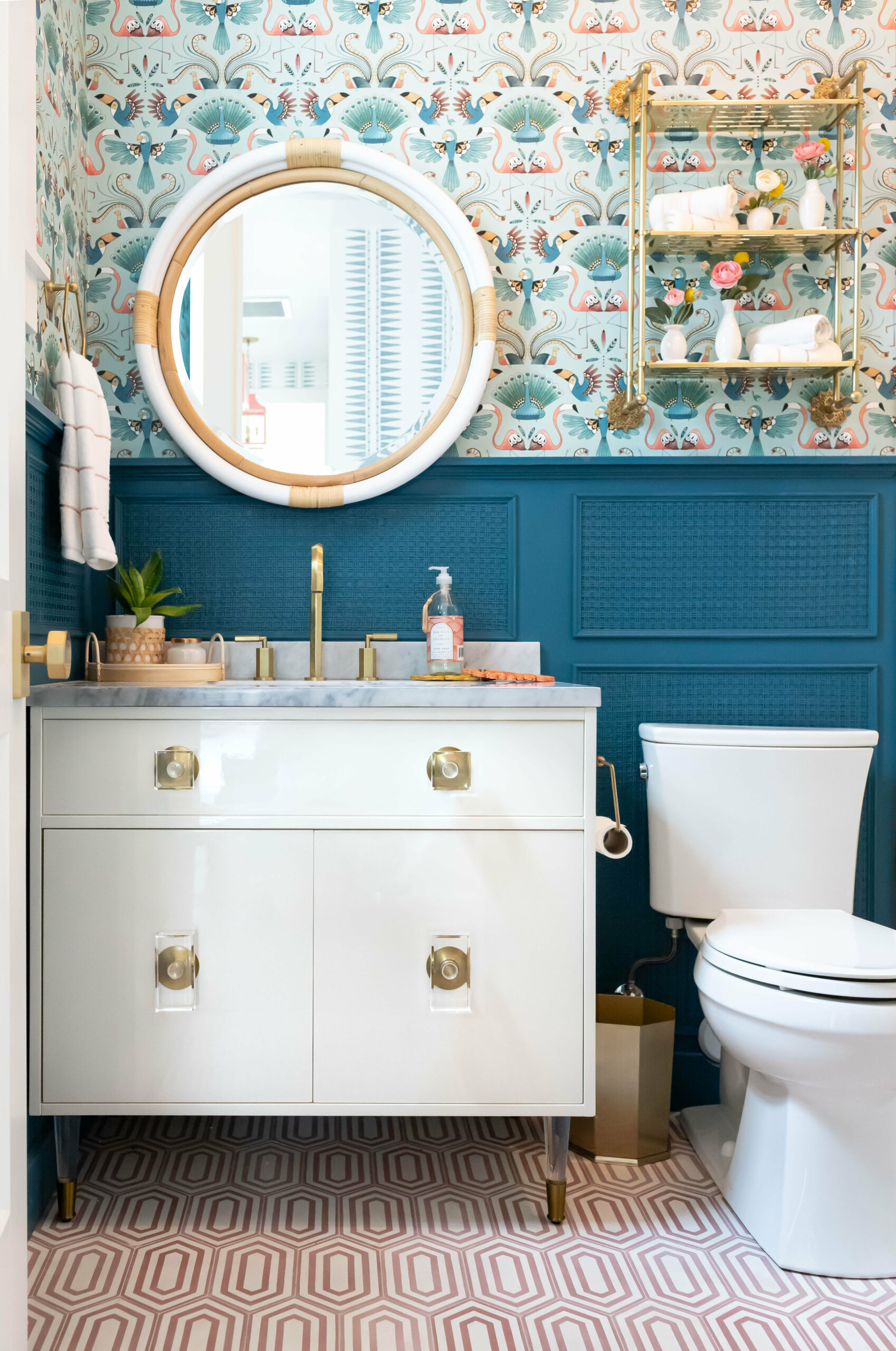
Photo above comes courtesy of OhSoJo of the From Up Here Wallpaper
Another important thing to remember is that any wallpaper primer you choose should contain a biocide to help resist mold and mildew.
Starting well usually means ending well, and using the right wallpaper primer for the surface you are installing on will save you time and money by providing a smooth installation process and a pain-free removal project when the time comes.
*Seth Davis is a contributor for Roman Products. He is a blogger and content writer for the residential and commercial wall coverings industry. Seth is focused on helping fellow homeowners, contractors, and manufacturers discover products, materials and methods of installation that increase property value, improve durability, and discover innovative wall covering options for their home or commercial space.
